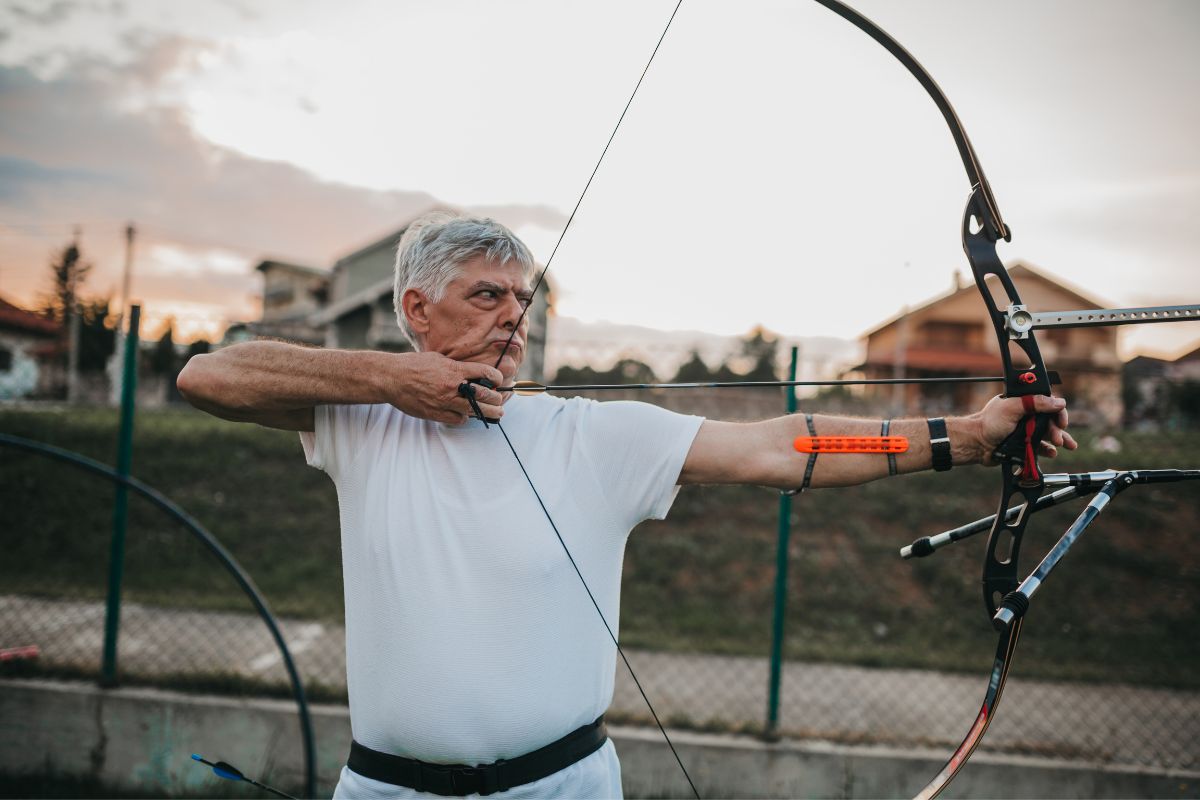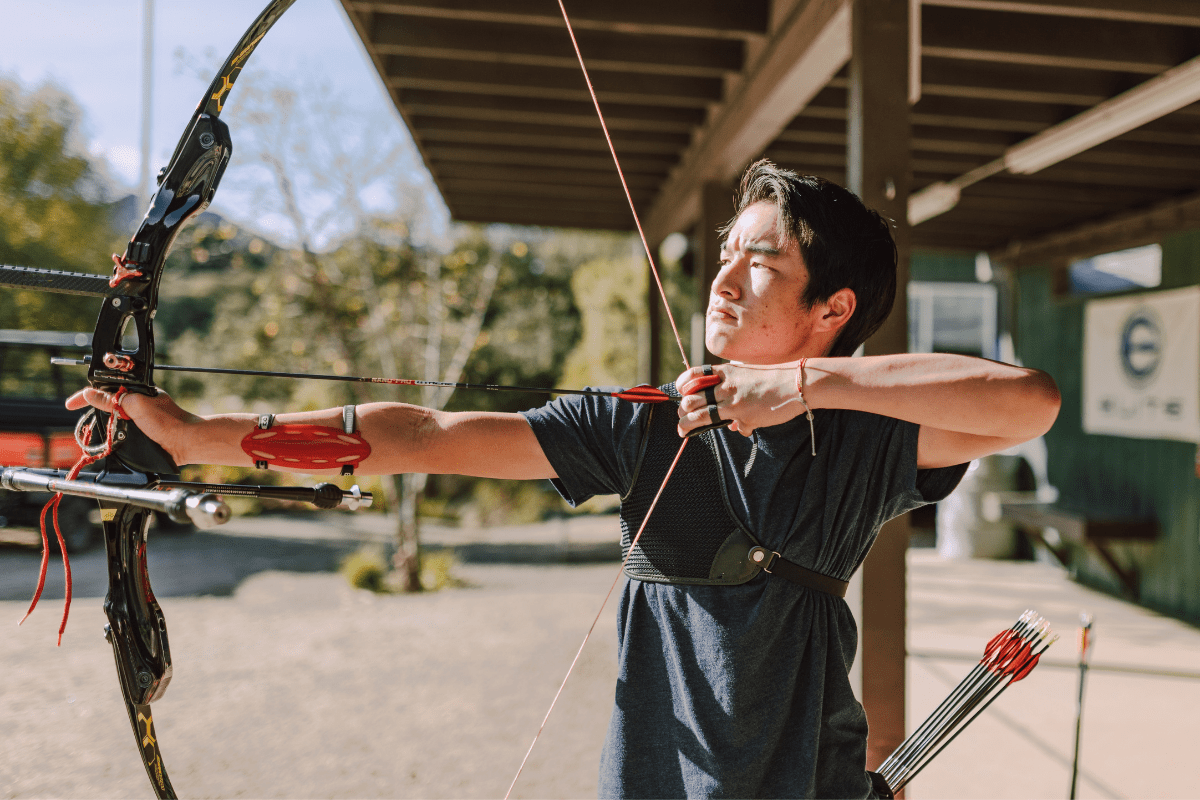If you’re new to the sport of archery, it can be difficult to remember everything you need to do when you pull back the bow. You need to be standing with your feet shoulder-width apart – check.
You need to grip the string with three fingers underneath the nocking point – check.
When nocked to the string, arrows have two ‘hen’ vanes which create a flat path against the riser, and one ‘cock’ vanes that point away from the riser. – check.
You need to pull the string back to your face (or any anchor point you are comfortable with) – check.
What about overdrawing the bow? Is it possible to overdraw a recurve bow? Does it really matter if you overdraw your bow? The answer is yes. Without a doubt. Recurve bows can be overdrawn.
Today, we’ll cover everything you need to know about overdrawing your bow and why this isn’t recommended.
We’re going to look at how this makes it much harder on yourself as an archer and how it doesn’t improve your accuracy. So let’s take a look at why you should avoid overdrawing your recurve bow!
Can You Overdraw A Recurve Bow?

If you are wondering whether it is possible to overdraw your recurve bow, then the answer to your question is yes.
However, if you wonder whether you should overdraw your bow, the answer is an overwhelming no.
Overdrawing your bow is an unnecessary thing to do when on the range. It is a common thing for beginners to do, as they tend to worry that their arrows aren’t going to hit the target.
This is why beginners tend to be given longer arrows, as it will account for the overdrawing.
When you overdraw your bow, you are using muscles that you don’t need to use.
You will also be making it much harder for yourself, as you will have to put more effort into each draw in order to pull the bow that far back.
We will cover what happens when you overdraw your bow in more detail down below.
If you have to overdraw your recurve bow to reach the correct posture and anchor point, this indicates that you haven’t got the right bow for your draw length.
It is very important that you find the appropriate bow for your draw length so that you can focus on using the correct posture and technique.
The only time that overdrawing your recurve bow would be necessary would be if you were taking part in a clout shoot. Unlike standard target archery, this is where you aim at a certain section of a cleared field.
There is often a stake with a rope attached to it at the center of what would be a giant target face.
Archers can then use this rope – which is marked in sections for each circle on a standard target face – to work out their score.
You will need to use overdrawing in order to get your arrows to reach this distance, as it is much further than the standard 25 yards.
What Happens When You Overdraw A Bow?
There are so many elements that come into play when you start to overdraw your bow.
A bow will need to be matched to your particular draw length so that you can follow the correct posture and technique that is needed for better accuracy.
Once you draw your bow beyond its optimal draw length, you add more poundage than necessary. For each inch you pull your string back, you add around 3 to 2 pounds to each shot.
This basically means that you are making the bow much harder to draw back, and it can actually be very off-putting for beginners who might not be aware that this is what they are doing.
Because the bow is being made harder to pull back, you have to use more muscle than is necessary.
This won’t be good for your arms or back and will make it much harder to stay at full draw so that you can aim. Just as it’s important to find the right draw weight for your needs so that you can stay at full draw for a full 3-hour shooting period, it will be important to find the right draw length for your needs.
So now that we know we are making it much harder on ourselves to stay at full draw for long periods of time, this will then of course, affect your accuracy.
You won’t be able to hold each shot for as long as you need to. Instead, you will try to shoot each arrow as quickly as possible to ease the stress on your muscles.
You will also run the risk of damaging your bow by putting too much pressure on the bow’s limbs. This can cause limb failure or even cause them to snap when you pull the bow back. This can be expensive, as you will have to spend more money on replacement limbs.
In Summary
So there you have it! You now know that it’s actually bad practice to overdraw your bow. This is a completely unnecessary step that you don’t need to follow, and you can actually be making things much harder on yourself if you were to overdraw your recurve bow.
If you find that you have to overdraw your bow to reach the correct posture and anchor point, this indicates that you haven’t got the right bow for your draw length.
If you were to overdraw your bow all the time, you will be putting unnecessary stress on your bow’s limbs, which will then cause them to break over time. Don´t do it.






